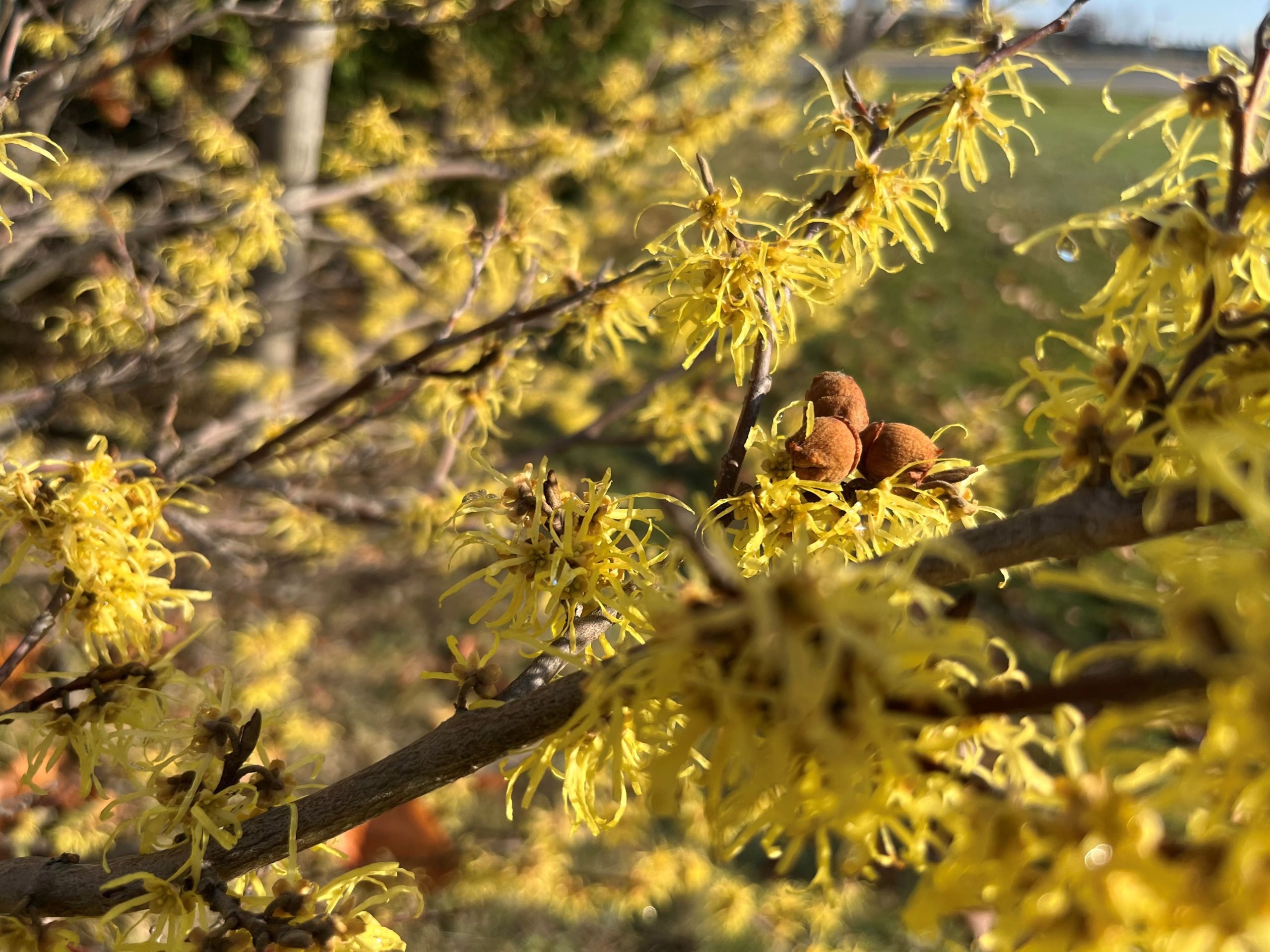
Maine Home Garden News – November 2024
In This Issue:
- Reader Survey
- November Is the Month to . . .
- Indoor Gardening: How to Grow Fresh Greens and Herbs Year-Round in Maine
- Native American Heritage Day and Thanksgiving
- Backyard Bird of the Month: Wild Turkey
- Maine Weather and Climate Overview
Reader Survey
We need your input! By sharing your experiences and suggesting topics that matter to you, you’ll play a crucial role in enhancing our community’s gardening knowledge and resources. Together, we can continue to make a positive impact on gardening in Maine. Please take a moment to submit your feedback by 11/22/24. Thank you for your support!
2024 Maine Home Garden News Survey
November Is the Month to . . .
By Kate Garland, Horticulture Professional
Originally published November 2022, updated for November 2024
Delay Collecting Evergreens. Hold off on gathering evergreen boughs for holiday decorations until after the trees have experienced at least three consecutive nights of temperatures at 20 degrees Fahrenheit. This will help ensure the needles remain attached longer. Watch this video for tips.
Avoid Invasive Species. When creating or purchasing holiday decorations, steer clear of invasive species. Instead of the tempting orange of bittersweet vines or the bright red berries of multiflora rose, consider using alternatives like winterberry and staghorn sumac fruits, seed heads from black-eyed coneflowers and native grasses, dried flowers, or even empty milkweed pods spray painted a flash gold or silver. These natural elements can beautifully enhance your seasonal displays.
Keep Harvesting.
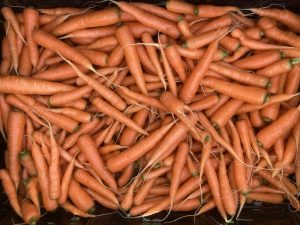
If you directly sowed seeds for carrots, spinach, Swiss chard, turnips, and beets in August or planted cabbage and broccoli seedlings during that time, you’re likely enjoying a late-season bounty! Use row covers to extend your harvest, allowing you to incorporate your home-grown produce even as winter begins to take hold. Looking to learn more? Pick up helpful tips from our neighbors in New Hampshire in this episode of their Granite State Gardening podcast.
Create Eco-Friendly Landscape Art.
Transform sticks and twigs that would typically be discarded or burned into an ecological work of art. The woody debris that accumulates after fall storms provides vital
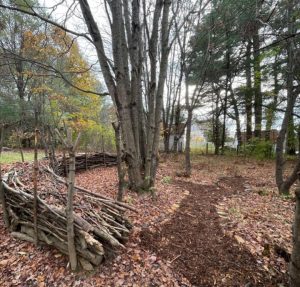
habitat for insects and wildlife. By arranging it creatively, you can enhance your landscape, clean up the yard, and create a safe space for creatures to overwinter. For inspiration, check out the award-winning “Art Goes Wild” installation by Gary Smith at the Garden in the Woods.
Plant Bulbs for Winter Cheer. Consider planting paperwhites and amaryllis bulbs for a splash of color during the winter months. This fun activity to enjoy with loved ones provides something cheerful to anticipate as daylight wanes.
Embrace the Outdoors. Finally, make an effort to spend time outside and soak up the diminishing daylight. Enjoying the crisp autumn air will boost your spirits and allow you to observe what’s still happening in your garden. You might be surprised by what you discover!
Indoor Gardening: How to Grow Fresh Greens and Herbs Year-Round in Maine
By Ankit K Singh, Assistant Extension Professor, University of Maine
As the growing season winds down in Maine, many gardeners might assume that fresh greens and herbs are off the table until spring—like that one dish at Thanksgiving no one ever touches. However, growing greens indoors or starting an indoor herb garden is a fantastic way to extend the harvest throughout the colder months. With a few simple techniques and the right equipment, you can enjoy fresh produce all winter long—no need to wait for spring to bring the salad back!
Choosing the Right Plants
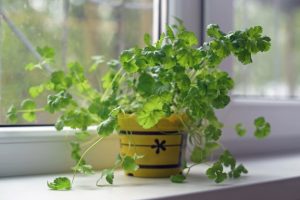
Not all greens and herbs are suited for indoor growing, but many varieties thrive in controlled environments. Leafy greens like lettuce, spinach, and kale are great options due to their quick growth and tolerance of low light. Herbs like basil, mint, parsley, and cilantro also adapt well to indoor conditions. These plants are typically low-maintenance and can be harvested regularly, making them ideal for an indoor setup.
Light Requirements
One of the most important factors in successful indoor growing is providing adequate light. Most greens and herbs require at least 6 hours of sunlight per day, which can be challenging in Maine’s short winter days. Setting up a space near a south-facing window may help, but investing in grow lights is often necessary for consistent results. LED grow lights are energy-efficient and customizable for different stages of plant growth. For best results, place the lights about 6 to 12 inches above the plants and leave them on for 12 to 16 hours per day to mimic natural sunlight.
Temperature and Humidity
Indoor plants thrive in temperatures between 65°F and 75°F, making most homes suitable for growing. However, it is important to keep the plants away from cold drafts or excessive heat from radiators or vents. Humidity levels can also affect plant health. While herbs like basil prefer a more humid environment, greens like lettuce are more tolerant of drier air. If your home is particularly dry during the winter, consider using a small humidifier or misting the plants occasionally to maintain moisture levels.
Watering and Soil
Watering is a critical aspect of indoor gardening. The key is to keep the soil evenly moist but not waterlogged. Overwatering can lead to root rot, while underwatering can stunt growth. Using pots with drainage holes helps prevent water from accumulating in the soil. A high-quality potting mix designed for indoor plants will provide the right balance of drainage and nutrient retention.
Containers and Space
One of the advantages of indoor growing is that you don’t need a large garden to be successful. Even small spaces like a kitchen windowsill or a corner of a room can be transformed into a productive mini-garden. Use containers that are at least 4 to 6 inches deep for herbs and 6 to 12 inches deep for greens. Vertical planters or shelving units with grow lights are also excellent space-saving options.
Harvesting and Maintenance
Indoor greens and herbs can be harvested regularly, which encourages continuous growth. For herbs, snip the leaves as needed, but avoid cutting more than one-third of the plant at a time. For leafy greens, cut the outer leaves and allow the center to continue growing.
When Maine’s winter decides to throw a never-ending snow party, you can still outsmart it by growing your greens and herbs indoors! With the right setup, a sprinkle of TLC, and enough patience to rival a saint, your indoor garden can thrive even during the icy months. Who needs summer when you’ve got fresh herbs on your windowsill, making your home feel like a tropical vacation… minus the sunburn?
Native American Heritage Day and Thanksgiving
By Lynne Holland, Horticulture Professional
Autumn is the start of the holiday season with its series of celebrations. I often joke that “craft sale season” is lodged squarely between Indigenous Peoples Day and Thanksgiving, with the first weekend of December batting clean-up for last-minute artisan shopping. But before we dive into the familiar whirl of holiday decorations and gift-giving, I would like to highlight the intent of Native American Heritage Month, which starts November 1, and of Native American Heritage Day, observed the day after Thanksgiving.
If you are feeling confused about having celebrated Indigenous Peoples Day a couple of weeks ago and now dedicating a whole month to Native American Heritage and observing a Native American Heritage Day, you’re not alone.
Indigenous Peoples Day, in some cases replacing or co-celebrated with Columbus Day, honors over 500 tribes in North America that are recognized by the federal government. Though not yet a federal holiday, it is a recognized holiday in a number of states (including Maine) on the first Monday in October.
Native American Heritage Month, on the other hand, is federally recognized as “a time to celebrate the traditions, languages, and stories of Native American, Alaska Native, Native Hawaiian, and affiliated Island communities and ensure their rich histories and contributions continue to thrive with each passing generation.” Native American Heritage Day is also federally recognized as a day of appreciation and recognition of Native peoples.
While the creation of this day may have been well-intentioned, it has been controversial. Its timing in relation to Thanksgiving and the shopping extravaganza of Black Friday fails to recognize that for many Native people, Thanksgiving as a commemoration of European settlement is regarded as a day of mourning, not a day of celebration.
So how might we respectfully celebrate a harvest festival in ways that recognize not only family and national traditions but the heritage of indigenous peoples in the Americas?
What is heritage?
Like culture, heritage is unique to individuals, their ancestry, the places they inhabit, and the people associated with those places. Our definitions of heritage are influenced by historical narratives, which are typically written by those who emerge victorious in conflicts and who dominate society. Thus, heritage can appear vastly different depending on one’s perspective.
Traditions and rituals shared from generation to generation play a significant role in how we understand our heritage, and food always plays an important role. Consider Thanksgiving. In my youth, the table was not complete without cranberry relish; in my husband’s, it was cranberry sauce. At our first Thanksgiving together, I asked my new mother-in-law for the sacred family cranberry sauce recipe. Her reply was, “It is on the back of the bag,” ironically, right next to my family’s relish recipe.
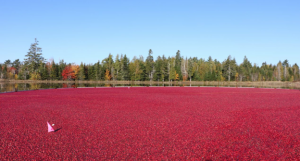
But how does a certain food like cranberries even become “essential” to a holiday menu? While cranberries may have been on the menu for the first colonial Thanksgiving, most of the foods considered “essential” today (potatoes, yams, green bean casserole, pumpkin pie) were not even available in the region at that time. The first colonial Thanksgiving was based on a Puritan thanks ritual, a religious and solemn event. This “tradition of providential holidays—days of fasting during difficult or pivotal moments and days of celebration to thank God in times of plenty” (History Channel) was part of an austere separatist religion, with little connection to the traditions of indigenous peoples who had been celebrating harvest ceremonies and festivals for millennia before the Western Europeans arrived.
But in fact, cranberries were an important source of food for the Wampanoag people, the tribe often said to have been present at the “First” Thanksgiving. Today’s Wampanoag people recognize Cranberry Day (National Museum of the American Indian) to celebrate the harvest of cranberries on common lands. This festival is a way of “honoring the gifts of the creator” (Paula Peters) and of also honoring the heritage of the Wampanoag People.
Recognizing the land’s original stewards is a good first step towards honoring the heritage of the original people of this land. Resources such as this map of various tribal communities can be helpful tools in building our understanding. Heritage is not merely about borders but also about ancestral ties that include Indigenous languages, oral traditions, and cultural expressions–including foodways.
I was inspired to create this ongoing series with an Indigenous focus after hearing former Master Gardener Volunteer Mihku Paul read a poem on Public Radio last November. I was blown away by the perspective of the poem and the speaker. At the time we had just heard Dr. Tony Sutton’s keynote to our new Master Gardener Volunteer Training class, and I had just begun being involved in APCAW (Ash Protection Collaboration Across Wabanakik) which addresses the issue of the Emerald Ash Borer through the prism of many cultures. It felt like a refreshing and positive way to view an issue. My monthly articles this year have been my attempts to investigate and honor that culture. I want to thank Dr. Sutton for his thoughtful feedback on the early drafts of each article in this series and guidance through this exploration.
The timing of Native American Heritage Month and Native American Heritage Day with Thanksgiving naturally leads to a comparison between the colonists’ celebration of surviving their first year in Plymouth and the grief stemming from the disease, oppression, and genocide that followed in the wake of those colonists. As we enter this time, consider meaningful ways to honor Native American Heritage Month by learning about the people of the land we now call North America through their heritage and culture—exploring their stories, poetry, art, or podcasts—rather than engaging in cultural appropriation by attempting to mimic their clothing, food, and rituals without proper understanding or permission. In the article 8+Ways to Celebrate Native American Heritage Day, Rhys Haven suggests a variety of ways to enrich our traditional harvest festivals by consciously seeking a greater understanding of indigenous history and culture.
I also encourage you to strive to learn about and honor Native Americans every day of the year. Our communities hold very rich traditions and histories that deserve to be heard and understood. With that in mind, I leave you with this:
“Remember the plants, trees, animal life who all have their tribes, their families, their histories, too. Talk to them, listen to them. They are alive poems.” From the Poem “Remember” by Joy Harjo, Poet Laureate 2019-2023
Additional resource:
The First Thanksgiving: “How Can We Tell a Better Story”
Author’s note:
As we move into 2025, I will be moving from writer of this series to curator of a new regular column called “Pollinator Ponderings” written by Master Gardener Volunteers about their experiences with pollinator-friendly land stewardship. Be on the lookout in the December issue for the first in the series from Penobscot County Master Gardener Volunteer Mike Maberry who will give us some ideas in his piece “Gifts for the Pollinator-Friendly Gardiner”.
Backyard Bird of the Month: Wild Turkey

By Field Naturalist Andy Kapinos
Half a century ago, there were no Wild Turkeys in anyone’s backyard in Maine. A combination of deforestation (for agriculture) and unregulated hunting led to the extirpation of Wild Turkeys across much of the Northeast by the late 1800s. The birds you see today are the result of decades of successful reintroduction efforts across the region, which relocated birds from wild populations in New York state to Massachusetts, Vermont, and eventually Maine in the 1970s. Since then, from initial introductions in York County, they have spread across the state, and beyond into New Brunswick. In addition to these reintroductions, the reforested landscape is much more suitable for Wild Turkeys: they need trees to roost in at night, and their most significant foods come from trees, like acorns. This time of year, you can find them pecking apart acorns or plucking caterpillars from under oak trees, sometimes alongside Gray Squirrels or White-tailed Deer; these species all eat acorns and often forage together for safety from predators. This is one of the many reasons to leave the leaves (and the acorns and the caterpillars) where they are this fall!
Maine Weather and Climate Overview
By Dr. Sean Birkel, Assistant Extension Professor, Maine State Climatologist, Climate Change Institute, Cooperative Extension University of Maine.
Maine statewide temperature and precipitation summaries from NOAA rank September 2024 as 7th warmest (top 1/10) and 7th driest (bottom 1/10) for records beginning 1895. The May–September (MJJAS) period, which generally captures the growing season, ranks 1st warmest and 65th wettest (normal). Statewide summaries for October are not yet available, but average temperature ranks for the month to date (1–26) from daily observations are 8th warmest (Bangor), 5th warmest (Caribou), and 13th warmest (Portland). Cumulative precipitation ranks for the same period are 5th (Bangor) and 6th (Caribou, Portland) driest for those locations, respectively, with records beginning 1953 or earlier. Precipitation deficits have been growing since early September, and in turn the U.S. Drought Monitor registers abnormal or moderate drought across the eastern half of the state and along the coast. The Northeast Drought Early Warning System Dashboard shows below or much below normal seven-day streamflows across the affected areas, and some groundwater monitoring sites are showing below normal.
Unlike last fall in which many areas in the state saw record or near record late first frost, this October produced chilly mornings with frost in the northern counties October 9 and variously across the state October 13–18 and toward the end of the month. Likewise, Maine’s fall foliage season was generally quite good with a fairly typical progression of peak color, occurring during the first week in October in the north, and mid-month in the south and along the coast. For questions about climate and weather, please contact the Maine Climate Office.
| Product | Temperature | Precipitation |
|---|---|---|
| Days 6-10: Oct, 2-6 (issued Sep 26) | Above Normal | Above Normal |
| Weeks 8-14: Oct 4-10 (issued Sep 26) | Above Normal | Above Normal |
| Seasonal: Oct-Nov-Dec (issued Sep 19) | Above Normal | Equal Chances |
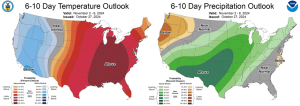
Do you appreciate the work we are doing?
Consider making a contribution to the Maine Master Gardener Development Fund. Your dollars will support and expand Master Gardener Volunteer community outreach across Maine.
Your feedback is important to us!
We appreciate your feedback and ideas for future Maine Home Garden News topics. We look forward to sharing new information and inspiration in future issues.
Subscribe to Maine Home Garden News
Let us know if you would like to be notified when new issues are posted. To receive e-mail notifications, click on the Subscribe button below.
University of Maine Cooperative Extension’s Maine Home Garden News is designed to equip home gardeners with practical, timely information.
For more information or questions, contact Kate Garland at katherine.garland@maine.edu or 1.800.287.1485 (in Maine).
Visit our Archives to see past issues.
Maine Home Garden News was created in response to a continued increase in requests for information on gardening and includes timely and seasonal tips, as well as research-based articles on all aspects of gardening. Articles are written by UMaine Extension specialists, educators, and horticulture professionals, as well as Master Gardener Volunteers from around Maine. The following staff and volunteer team take great care editing content, designing the web and email platforms, maintaining email lists, and getting hard copies mailed to those who don’t have access to the internet: Abby Zelz*, Annika Schmidt*, Barbara Harrity*, Kate Garland, Mary Michaud, Michelle Snowden, Naomi Jacobs*, Phoebe Call*, and Wendy Robertson.
*Master Gardener Volunteers
Information in this publication is provided purely for educational purposes. No responsibility is assumed for any problems associated with the use of products or services mentioned. No endorsement of products or companies is intended, nor is criticism of unnamed products or companies implied.
© 2023
Call 800.287.0274 (in Maine), or 207.581.3188, for information on publications and program offerings from University of Maine Cooperative Extension, or visit extension.umaine.edu.
